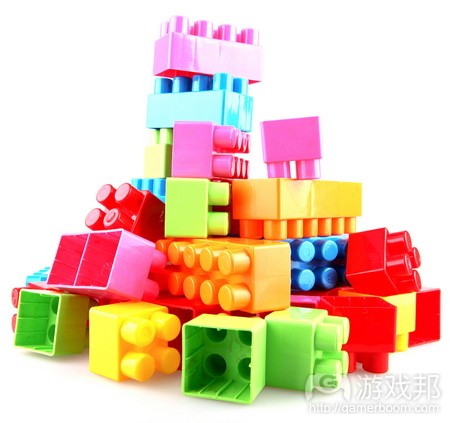阐述游戏设计5大基本考虑要素
作者:Dave Dobson
在我看来,针对潜在玩家制作有趣的游戏似乎都要具备大量要素,以下是我自己总结的一些游戏设计原则,排序不分先后:
1.机制和规则:游戏设计实际上是一个请求——邀请他人来到这里,花一个小时体验我设计的活动。要先有活动机制及规则,然后才能发出邀请,这两者将在很大程度上决定他人是否愿意尝试游戏,之后又是否会重返游戏。它们是多数游戏设计的最根本要素,但并非所有游戏均是如此——也有些游戏是借鉴的是其他游戏的机制或规则,它们主要依靠自己的视觉元素、主题或其他方面来吸引玩家。
2.互动:这里包括积极型(游戏邦注:例如协作、组队或团体游戏)、中立型(如《大富翁》这类个人决策会影响他人的游戏)或消极型(竞争或“不怀好意”的游戏,例如允许玩家阻碍他人进程或窃取他人资源的游戏)。也有些游戏能以最小限度的互动让玩家获得乐趣,但如果互动性太少,那么玩游戏就可能变成一项解谜活动或业余爱好。而互动过多,无论是积极型还是消极型,也可能产生不利影响。关键是找到游戏机制与目标玩家之间的平衡。
3.图像与组件:这一点的重要性也许甚于多数人的看法。你可能拥有世界上最棒的游戏设计,但如果游戏元素很丑陋,那么玩家也不会喜欢这种游戏。相反,有时候出色的图像或其他元素的设计却有可能拯救一款玩法不甚出众的游戏。
4.创新:它对初次玩法体验以及各个层面的宣传(无论是好友间的口头传播还是大众媒体的推广)来说非常重要。假如你能想出一个新游戏机制,新目标,或者一种全新的活动,你就有可能说服人们去尝试自己的游戏,甚至买下游戏。但光有新意还远远不够。
5.趣味:实现这一点很困难,因为人们对趣味的看法各有不同,没有哪一款游戏能够具备将所有玩家一网打尽的趣味。趣味在设计早期阶段是一种难以捉摸或定义的元素,因为你在这一时期通常只关注设计机制和规则而非游戏趣味性。因此,我们通常在设计的迭代阶段才开始追求游戏的趣味——你设计了游戏,然后尝试游戏,找到最令人抓狂或无趣的部分,之后再进行调整,并突出具有趣味性的内容。
游戏设计还有其他多种值得考虑的要素,但你可以将这个列表视为这些元素的融合体(尤其是趣味,它是多数游戏的首要目标)。
游戏邦注:原文发表于2010年3月30日,所涉事件及数据以当时为准。(本文为游戏邦/gamerboom.com编译,拒绝任何不保留版权的转载,如需转载请联系:游戏邦)
Essential elements of game design
March 30, 2010
Posted by Dave Dobson
So, it seems to me that there are a bunch of competing qualities that make games interesting to potential players. Let’s see if I can name and elaborate them here – kind of a Grand Unification Theory for game design. These are in no particular order:
1.Mechanics and Rules – A game design is essentially a request – come here, spend an hour doing this activity I’ve devised. The mechanics and rules define the activity, and therefore the request, and they’ll determine in large part whether people will want to play the first time, and then whether they’ll come back. This is clearly the most fundamental part of game design for most games, but not all – I’m sure many of you have played a game that has borrowed most or all of its rules or mechanics from another game, and relies on its art, its theme, or some other aspect to attract players.
2.Interaction – This can be positive (cooperative, party, or team games), neutral (games with individual decisions that affect others, like Monopoly or trading games) or negative (competitive or “mean” games, where you can block or hinder others’ progress or steal their resources). There are some games that are fun with minimal interaction, but you start to shift from game to puzzle or hobby with too little interaction. Too much interaction, either positive or negative, can be bad too. The key is finding the right amount for the game’s mechanics and audience.
3.Graphics and Components – This is probably more important than most people realize. You can have the best game design in the world, but if people are playing with ugly, crude parts, then they’re not going to like it. Conversely, sometimes graphic design and part quality can carry a game that would otherwise not be worth playing.
4.Innovation – this is interesting, because it’s terribly important for the initial gameplay experience, and for “buzz” at all levels – whether just between friends or in the broader media. If you can think up a new game mechanic, a new goal, or a fundamentally new kind of activity, you’re going to get people to try your game, and maybe buy it. But it’s not enough to make it the game you remember years later, or pull out every year at the holidays. More on innovation in a later post.
5.Fun – this is tough, because fun is definitely in the eye of the beholder, and no one game can be fun for everyone. Fun can be hard to capture or identify early in the design process, because often you focus on mechanics or rules before you worry about how fun your game is. Because of this, the pursuit of fun is often an iterative process in design – you design the game, then try it, figure out what the most frustrating or boring parts are, and try to modify the game to mitigate or remove them while amplifying and promoting the parts that are fun.
Let’s leave it at those five for now. There are plenty of other important factors for game design, but you can lump most of them into these categories (especially into fun, which is the primary purpose of most games). (source:planktongames)








































 闽公网安备35020302001549号
闽公网安备35020302001549号